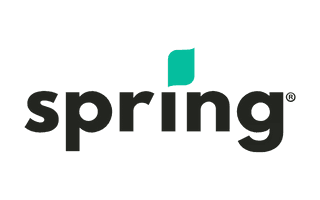If you’re struggling to make on-time payments towards your student debt, refinancing could be the answer. Student loan refinancing could help you get a lower interest rate or a more manageable monthly loan payment.
But it’s not always a good idea to refinance student loans. Whether it’s worthwhile depends on your current loan terms and financial situation. Keep reading to find out how refinancing works and how to decide if it’s a good choice for you.
How do you refinance a student loan?
Student loan refinancing works just like any other type of refinancing. You take out a new loan with lower interest rates or more favourable terms to wipe out your current debt. Then you begin making repayments on your new loan.
Your ability to get a better deal on a new loan will depend on your creditworthiness and financial history. Factors that lenders typically consider when processing your eligibility for a new loan include your credit score, income, job history and educational background.
Must read: refinancing vs. consolidating your student loan
Should you refinance or consolidate your student debt? First, make sure you’re aware of the difference between the two.
- Student loan refinancing. Refinancing involves taking out a new loan with a lower interest rate or better terms and using the funds to pay off an existing loan.
- Student loan debt consolidation. Debt consolidation is when you combine multiple loans into one loan. The new loan offers the convenience of a single monthly payment plus a reduced interest rate or more favourable terms.
It’s worth pointing out that if you have federal and provincial student loans, depending on where you live, those loans may automatically consolidate into a single loan payment once you graduate. This is the case if you live in New Brunswick, Newfoundland and Labrador, Ontario or Saskatchewan.
But if you live in Alberta, British Columbia, Manitoba, Nova Scotia or Prince Edward Island, your federal and provincial loans will not automatically consolidate when you graduate. Additionally, if you live in Nunavut, the Northwest Territories, Quebec or Yukon, you only have one government-issued loan to repay.
When should I refinance student loans?
Whether or not you should refinance student loans depends on a number of factors. You might like to consider refinancing in the following scenarios.
It’s a good idea to consider student loan refinancing if:
- You have good credit. You can usually get lower interest rates on private loans if your credit score is over 660. Apply for a credit report from credit bureaus like Equifax and TransUnion.
- You have a low debt-to-income ratio. You’ll typically get better rates if you have a low debt-to-income ratio (below 40%), which shows that you have enough income to make repayments.
- You don’t have government-issued student loans. If you funded your post-secondary education through private loans rather than government loans, it’s often easier to negotiate better rates.
- You have a job and a steady source of income. You’re more likely to be approved for better terms if you can show that you have a steady stream of money coming in to make loan payments.
It might not be worth refinancing if:
- You have bad credit. If your credit score falls below 660, you might have trouble securing a loan with better rates and terms. It might make more sense for you to continue paying off your current loan until your credit score improves.
- Your debt-to-income ratio is high. If you’re carrying a high debt load (i.e. your monthly debt payments are over 40% of your gross monthly income), most lenders will charge higher interest rates on your loan to make up for the risk assumed by financing you.
- You have government-issued loans. Government-issued loans often come with the best rates and terms on the market. You might struggle to find a private lender that can offer better terms.
- You’re unemployed or new to the workforce. Most providers are unlikely to negotiate better terms or give you low interest rates on a new loan if you can’t show proof of having a steady, long-term income.
How to refinance student loans
If you’re thinking about refinancing your student loans, consider the following options.
Repayment Assistance Plan
If you have a federal government student loan and you’re struggling to make payments, you might qualify for the federal government’s Repayment Assistance Plan (RAP). While it’s technically not a refinancing option, it can help you pay off your student debt. Depending on how much income you receive, you may qualify for reduced loan payments or no payments at all.
If you qualify, the government will:
- Pay any interest you owe on your federal loan that is not covered by your reduced payment amount, and
- Start paying down the loan principal and remaining interest after you’ve completed 60 months of RAP or 10 years after you finish studying.
You’ll need to reapply for RAP every six months to ensure that you are still eligible for assistance.
Personal loan
You can refinance your student loan debt with a personal loan. Some of the best personal loans are unsecured, which means you don’t need to put up any kind of collateral. Lenders rely on your credit score to see if you’re eligible, so it’s important to have a good credit score and financial history.
Alternatively, if you own an asset such as a car, you might be able to take out a secured loan. These loans often offer lower rates and better terms, but they also come with the risk of losing your asset if you can’t make your repayments on time.
There are also some lenders that offer bad credit personal loans. However, these loans typically come with higher interest rates, so be careful about taking them out to refinance your student loans.

- Accepts bad credit borrowers
- Easy online application
- Quotes from multiple lenders
- Access cash within 1-3 business days

- Accepts bad credit borrowers
- Quotes from multiple lenders
- Pre-approval in 5 minutes
- Funds in as little as 24 hours
Guarantor loan
If you don’t meet the lender’s credit score requirements or you have a high debt-to-income ratio, you may need to apply for a loan with a guarantor. A guarantor is a relative or friend with a strong credit rating who agrees to pay off your loan if you can’t keep up with repayments.
Applying with a guarantor reduces the lender’s risk. This means you can qualify for a lower rate and a larger loan amount.
The downside is that you need to find a guarantor who’s willing to take on the risk of guaranteeing your loan. Not only is this a financial commitment that will impact their credit history, but it can also place your personal relationship with them under strain.
What to look for when refinancing
Refinancing your student loans? Keep the following in mind when comparing loan options.
- Interest rate. Look at which lender offers the best rate, and determine whether a fixed rate or variable rate would work best for your budget.
- Fees. Read the fine print for details of any fees that apply to your new loan. You should also check whether there will be any prepayment penalties for paying off your original loan early.
- Loan term. A shorter term means you will pay less interest in the long run, but you’ll need to be sure you can manage a higher monthly payment.
- Cosigner options. Look for a lender that will let you refinance with a cosigner if you can’t meet the qualifications needed to get the best rates on your own.
- Reviews. Check out reviews on sites like the Better Business Bureau and Trustpilot to make sure you’re dealing with a legitimate lender.
How much could I save by refinancing my student loan?
How much you save depends on the interest rate and loan term of your new loan vs your current loan. As an example, let’s take a look at how much Mary, a recent graduate from university, could stand to save by refinancing her $40,000 student loan with a lower interest rate and a shorter loan term.
Current loan
- Amount: $40,000
- Interest rate: 6%
- Remaining loan term: 13 years
New loan
- Amount: $40,000
- New interest rate: 5%
- New loan term: 10 years
| Original loan | New loan | |
|---|---|---|
Loan amount | $40,000 | $40,000 |
Interest rate | 6% | 5% |
Term | 13 years | 10 years |
Monthly payment | $369.89 | $424.26 |
Total interest | $17,702.74 | $10,911.45 |
As you can see, refinancing to a lower rate and shorter loan term will save Mary a lot in the long run. While in this example her monthly payment will increase, she’ll save $6,791.29 in interest over the life of the loan.
Pros and cons of refinancing a student loan
Pros
- Lower interest rate. You may be able to negotiate a lower interest rate and reduce the total amount of interest you’ll pay. Learn more about low interest loans.
- Reduced monthly payment. By refinancing to a loan with a longer term, you can lower your monthly payment amount.
- Single payment. Refinancing loans can be used to consolidate several debts into one easy and affordable monthly payment. This can help you better manage your debt load.
- Improved credit rating. Over time, refinancing can help you get your finances back on track and improve your credit score.
Cons
- Potentially higher interest rates. Depending on your financial history, the interest charged on a private loan may be higher than what you’re currently paying.
- No repayment assistance. When you refinance your government-issued loan with a private loan, you may not be able to qualify for government repayment assistance or reduced payments if you need it.
- No tax-deductible interest. Unlike government loans, private student loan interest isn’t tax deductible.
How to apply for student loan refinancing
Applying for student loan refinancing is usually less complicated than applying for a student loan. Before applying, make sure you meet your lender’s eligibility requirements.
Typical eligibility requirements
- Good to excellent credit. You’ll usually need to have a credit score that sits above 660 to qualify for better terms on your loan.
- Steady income. Most lenders require that you have a steady income and be employed over a long period.
- Credit history. Lenders will usually reference your credit history to see if you’re capable of paying back loans on time.
Required documents
You may be asked to supply the following documentation when you apply for a loan.
- Government-issued ID. You’ll have to show proof of ID like a driver’s licence or passport.
- Proof of income. You’ll be required to submit documents like pay stubs and letters of employment to verify how much money you make.
- Loan statements. You may need to provide a recent loan statement showing how much you currently owe on your student debt.
Bottom line
If you have student debt, student loan refinancing could help you get a lower interest rate or better repayment terms. But refinancing isn’t always worth it, so consider your financial situation carefully to figure out if you’ll be better off. If you decide to refinance your loan, make sure you compare all of your options and do your research before choosing a lender.
Frequently asked questions
Sources
More guides on Finder
-
Where to get a student loan when you have bad credit
If you’ve got less-than-perfect credit, here’s how and where to get a student loan in Canada.
-
Student loan regret
Furthering education shouldn’t be a decision you regret, but 81% of Canadians who took out a student loan would rethink their decision. Those findings and more from Finder’s student loan regret survey.


